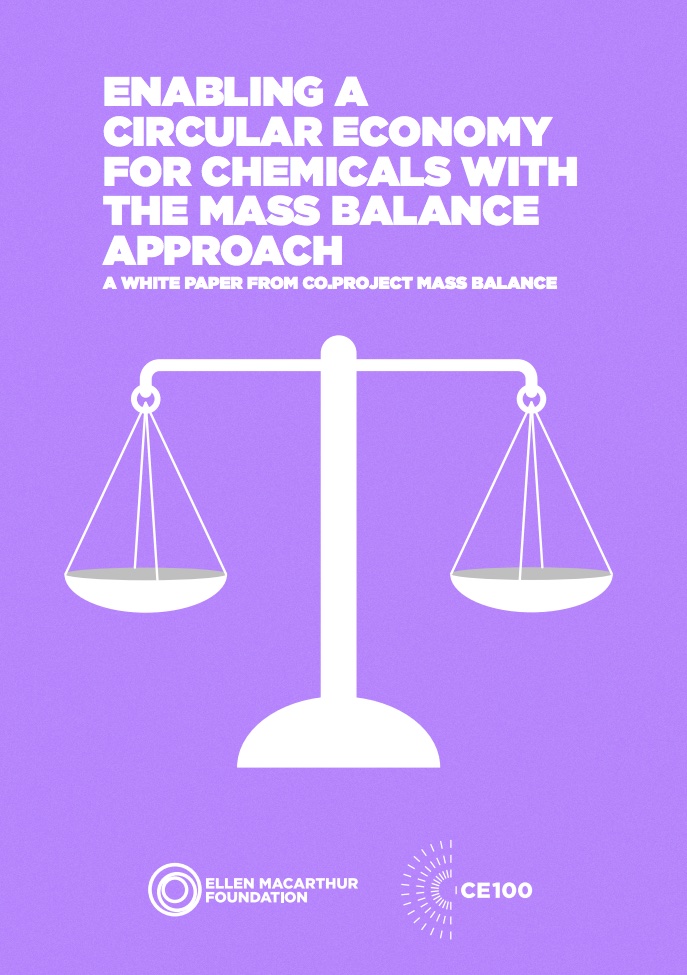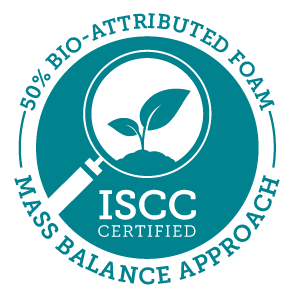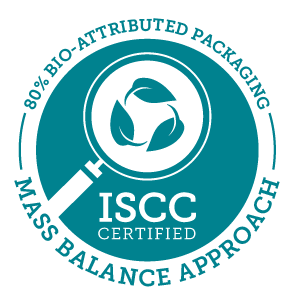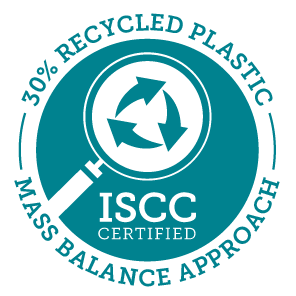The Mass Balance Approach
Over the past years, the mass balance approach has prevailed in the chemical industry. As an important milestone on the pathway to a circular economy and bioeconomy, it has been designed to trace the flow of materials through a complex value chain. Since chemically recycled or bio-based feedstocks are typically blended in the manufacturing complex, physical segregation of recycled content is often practically and economically infeasible. The mass balance approach makes it possible to track the amount and sustainability characteristics of circular and/or bio-based material in the value chain and attribute it based on verifiable bookkeeping.
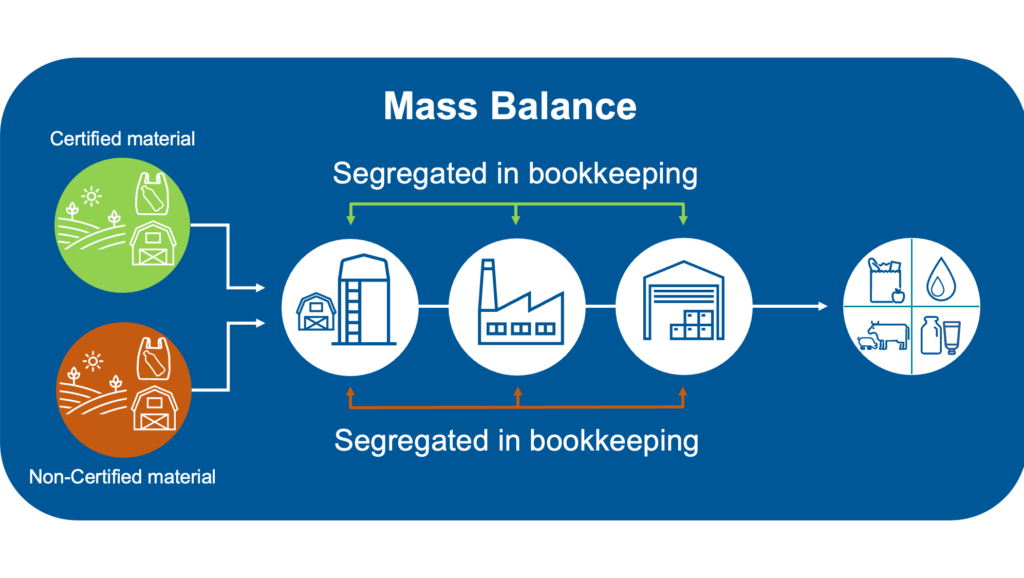
The “Free Attribution” Option in ISCC Certification
One of the major advantages of the ISCC PLUS mass balance approach is the possibility to gradually increase the share of bio-based and/or circular feedstocks in the production process. In addition, the calculated share of bio-based and/or circular feedstocks can be attributed on an equivalent basis to one or several outputs. On this basis, the ISCC PLUS mass balance approach allows system users to make credible claims.
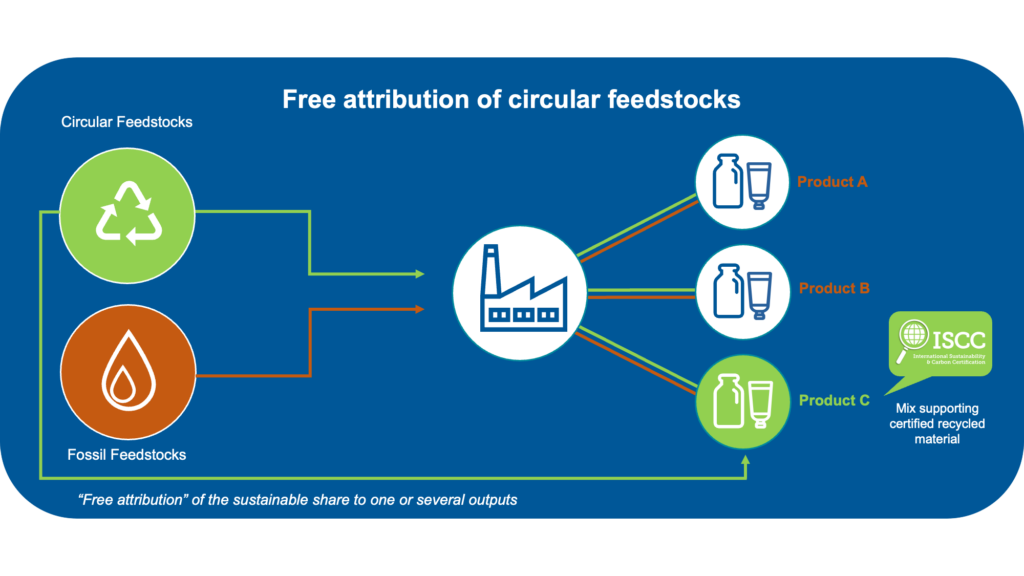
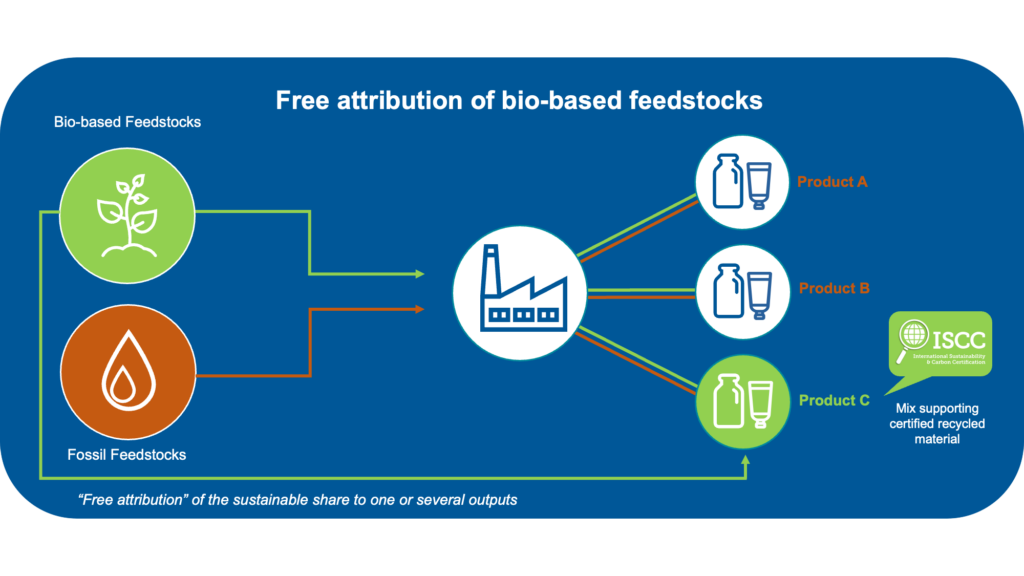
Further Information on the Mass Balance Approach
CE100 Whitepaper: Enabling a Circular Economy for Chemicals With the Mass Balance Approach
The Ellen MacArthur Foundation brings together decision-makers across business, government and academia and acts as a global thought leader for the circular economy. The foundation’s Circular Economy 100 (CE100) Network provides a pre-competitive space for businesses and stakeholders to learn, share knowledge, and build new collaborative approaches.
An important milestone on the pathway to a circular economy is the mass balance approach for the chemical industry. By publishing a whitepaper, the Ellen MacArthur Foundation’s CE100 Network, including ISCC members Eastman and UPM, propose a mass balance approach with predefined rules. ISCC has implemented the whitepaper’s concept in the ISCC PLUS mass balance approach.
On-Product Logos for Material Tracked by Mass Balancing
*Disclaimer: The logo combinations are examples reflecting example supply chains
Explaining the Mass Balance
FEICA Master Class from ISCC
